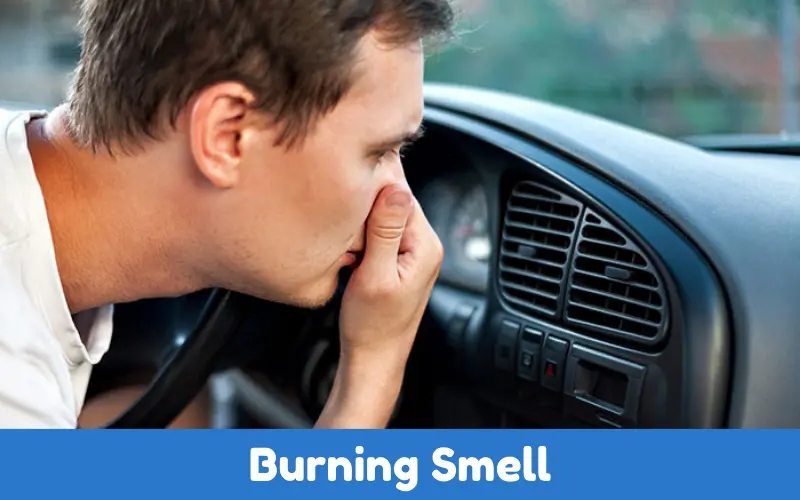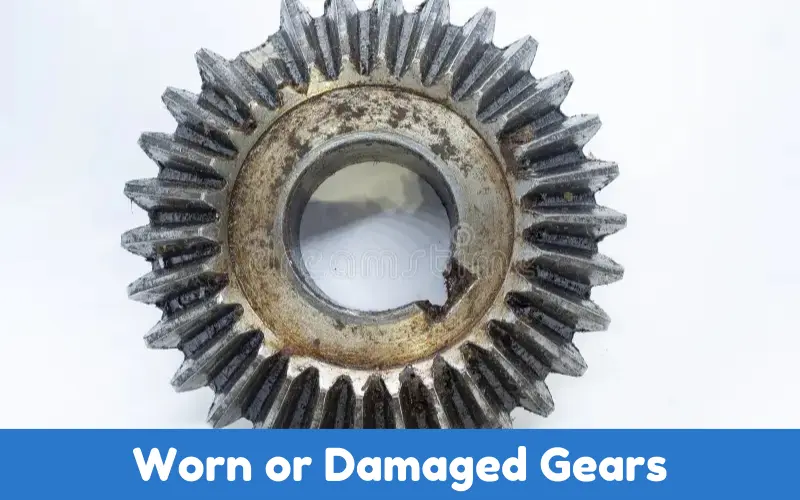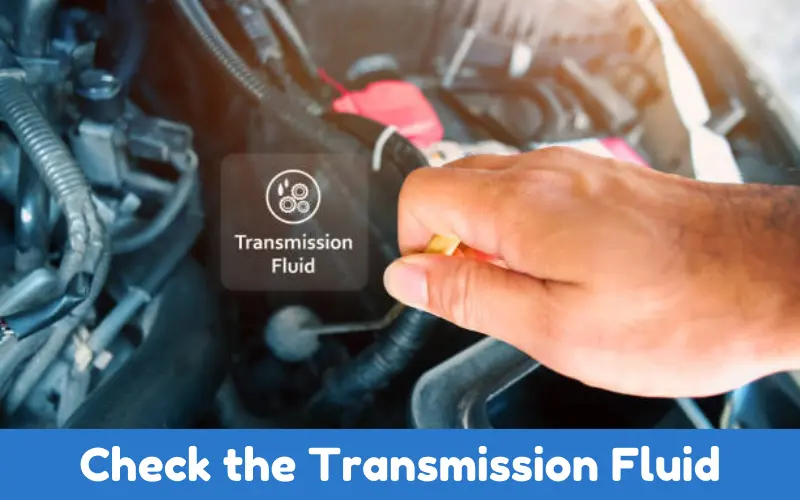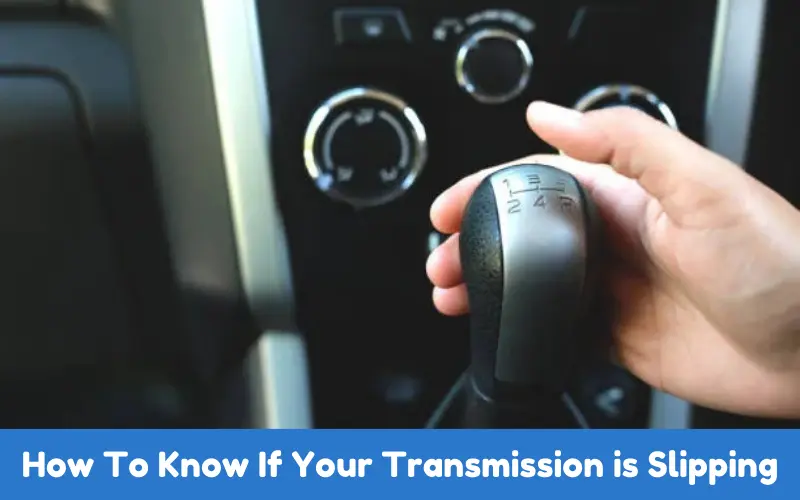Transmission issues can be frustrating, time consuming, and often expensive. Slipping transmission is one of the most common problems, and if you don’t take action, it can seriously affect your car’s performance, safety, and longevity.
But how to know if your transmission is slipping? In this guide, we’ll look at the main signs that your transmission is slipping, why that happens, and what you can do about it.
Article Summary
- What Is Transmission Slipping?
- Key Signs Your Transmission Might Be Slipping
- How To Know If Your Transmission is Slipping: Causes of Transmission Slipping
- What To Do If You Suspect Your Transmission Is Slipping?
- How To Fix Slipping Transmission?
- 1. Check the Transmission Fluid
- 2. Inspect For Leaks
- 3. Change the Transmission Fluid And Filter
- 4. Check the Transmission Control Module (TCM)
- 5. Look For Electrical Issues
- 6. Examine the Clutch (For Manual Transmissions)
- 7. Check For Software Updates
- 8. Seek Professional Help
- 9. Consider a Transmission Rebuild or Replacement
- Tips
- Can I Drive with a Slipping Transmission?
- FAQs on How To Know If Your Transmission is Slipping
What Is Transmission Slipping?
A common issue with an automatic transmission is slipping, which occurs when your car shifts gears differently than expected, refuses to stay in any particular gear, or suddenly drops out of gear. It may come with strange sounds, motions, and a lack of power.
Key Signs Your Transmission Might Be Slipping
The following signs are visible if your transmission is slipping.
Delayed or Unresponsive Acceleration
An example is your car slowing or not increasing speed when you floor it a sign of a slipping transmission, with revs increasing but speed not changing accordingly.
Unusual Noises
Grinding, whining, or buzzing are all possible sound effects. Some people may even encounter the noises only when shifting gears or revving the engine.
Burning Smell
The transmission overheating is often symptomatic in a slipping transmission. The smell of burning might well be what you are smelling. Check your fluid.

Overheating transmission fluid is no good: check the fluid while you are under the hood or watch the video to check the dipstick after adding more fluid. This smell might indicate a more serious problem.
Difficulty Shifting Gears
Trouble shifting gears or unusual gear changes while driving could indicate a slipping transmission. The car might jerk or shudder when you try to change gears or could shift more abruptly than usual.
Higher Than Usual RPMs
If your RPMs are elevated, particularly if they are not in sync with your speed, it is a possible symptom of a slipping transmission. Pay special attention to irregularities in the tachometer.
How To Know If Your Transmission is Slipping: Causes of Transmission Slipping
After the signs, the following causes you may face when your transmission is slipping.
Low or Contaminated Transmission Fluid
Transmission fluid lubricates and cools the transmission, and gears can slip without enough or dirty fluid.
Worn Out Clutch (Manual Transmission)
A worn-out clutch on manual cars is one of the main issues that cause slipping, as the clutches have to be replaced over time. If you drive a manual car, then this might be it.
Damaged Transmission Bands (Automatic Transmission)
Automatic transmissions have transmission bands, which release and engage gears. Over time, these bands will wear out, causing the gears to slip.
Worn or Damaged Gears
In automatic and manual transmissions, gears must be moved into the right position for the car to switch gears. If the gears are worn or broken, they can slip, and they might need replacing.

Electronic or Software Issues (Newer Vehicles)
Electronic problems are among the likely causes of later model transmissions slipping. Possible culprits include transmission control modules, transmission sensors that stop working properly, and glitches in transmission programming. A mechanic can diagnose the exact problem.
What To Do If You Suspect Your Transmission Is Slipping?
Check Your Transmission Fluid: First, check the level and color of your transmission fluid. Low or discolored fluid could indicate a leak or problem.
Get a Diagnostic Check: A diagnostic test run at most auto repair shops designs the needed repairs, whether by a mechanic or an electronic machine, to save time and money and provide prompt solutions.
Don’t Ignore the Issue: Left alone, the damage will only worsen, and the cost of a repair will rise in turn. If you suspect any of the numerous symptoms, get it done.
Consider a Transmission Service: Regular fluid transmission service (including a fluid and filter change and fluid check) can reduce slipping. Check your manual for recommended service intervals.
How To Fix Slipping Transmission?
Transmission slipping is quite frustrating, but there are more than a few steps you can take to help diagnose the issue and hopefully fix it. Here is a look at some common causes and solutions.
1. Check the Transmission Fluid

- Level: Ensure the fluid is at the correct level. Low fluid can cause slipping.
- Condition: Check for discoloration or smells like burning. Condition: After starting, check again if the fluid looks dark and smells like burning. If so, the fluid will need to be topped up again.
2. Inspect For Leaks
Look for leaks under the vehicle, transmission fluid should be bright red. Look for drips from or around the pan, a rubber seal, or a line.
3. Change the Transmission Fluid And Filter
If it’s an old or dirty filter, replace the fluid with a new batch and filter. Manufacturers have recommendations on how often to do this.
4. Check the Transmission Control Module (TCM)
When the TCM is bad, it can let transmissions slip between gears. A scan tool can diagnose excruciating shifting problems.
5. Look For Electrical Issues
Inspect the wiring and connectors for the automatic transmission. Wiring can be damaged, and connectors can corrode over time.
6. Examine the Clutch (For Manual Transmissions)
The Clutch-slipping Fix: If you have a car with a manual transmission, a worn clutch might be the culprit. Check the clutch and replace it if necessary.
7. Check For Software Updates
Other models of this vehicle will need to have the control of the transmission system updated via software. Contact your dealer for further details.
8. Seek Professional Help
If these steps don’t help, it might be time to bite the bullet and pay the rate of this mechanic or transmission specialist performing a full diagnostic on the vehicle.
9. Consider a Transmission Rebuild or Replacement
If the transmission is, you may have to rebuild or replace it.
Tips
- Always refer to your vehicle’s manual for specific maintenance guidelines.
- Regular maintenance can help prevent transmission problems in the future.
Can I Drive with a Slipping Transmission?
Driving with a slipping transmission is dangerous, and you should not do it. If your transmission slips, it cannot properly change gears, resulting in sudden, unexpected shifting, a loss of power, and slow acceleration.
All this affects your ability to control the car while making it hard to react suddenly in traffic, increasing the risk of an accident.
A slipping transmission often indicates a larger mechanical problem, and continuing to drive it may only exacerbate that problem, causing more severe damage and higher costs.
If you are getting symptoms like high RPM that do not correspond to increased speed, delayed shifting, or unresponsive shifting, or just altered sounds, you should get it checked out by a professional sooner rather than later.
Short trips in for a nearby repair shop might be okay, but if your car has a slipping transmission and you go on a long road trip, or you are driving in normal conditions, you are putting yourself and the vehicle at risk.
FAQs on How To Know If Your Transmission is Slipping
What Are the Signs of a Slipping Transmission?
Some telltale signs are slow or no responses to shifting, high revs (engine speed) when accelerating, a lack of acceleration, grinding or whining sounds, and a burning smell. These common symptoms may be signs of transmission slippage, which means the transmission cannot keep the car in current gear.
What Causes a Transmission To Slip?
Causes for slippage include low or dirty transmission fluid, worn-out gears, tears in the half shafts (connecting the transmission to the axle), a broken or worn-out band, a damaged or broken clutch, or a faulty connection. Regular maintenance such as regular lubrication and checking fluid levels can help prevent slippage.
Is It Safe To Drive with a Slipping Transmission?
Driving with a slipping transmission would be unsafe because the car may not reach the desired speed even with the gas pedal fully depressed, and the gear may not be able to change. Driving with a slipping transmission might also be dangerous in traffic. Furthermore, driving with a slipping transmission may cause additional damage to the car, making the repair more expensive.
Can I Fix a Slipping Transmission Myself?
Low transmission fluid is a minor issue that might be solved by topping off the fluid. If you return to driving and the car still slips, chances are it is due to a mechanical problem, again requiring professional diagnostics and repair. DIY suggestions are usually not recommended for slipping transmission.
How Much Does It Cost To Repair a Slipping Transmission?
Repair costs depend on the severity of the problem. Minor repairs, such as a transmission fluid change or a replacement clutch, can run a few hundred bucks. Major repairs or a transmission rebuild could cost anywhere from $1,000 to $5,000.
Conclusion
Transmission slipping can be a serious problem, so a little preventative maintenance will go a long way if you stay on top of the early symptoms.
A well-maintained transmission will most likely play an important role in keeping your car going for a long time.

